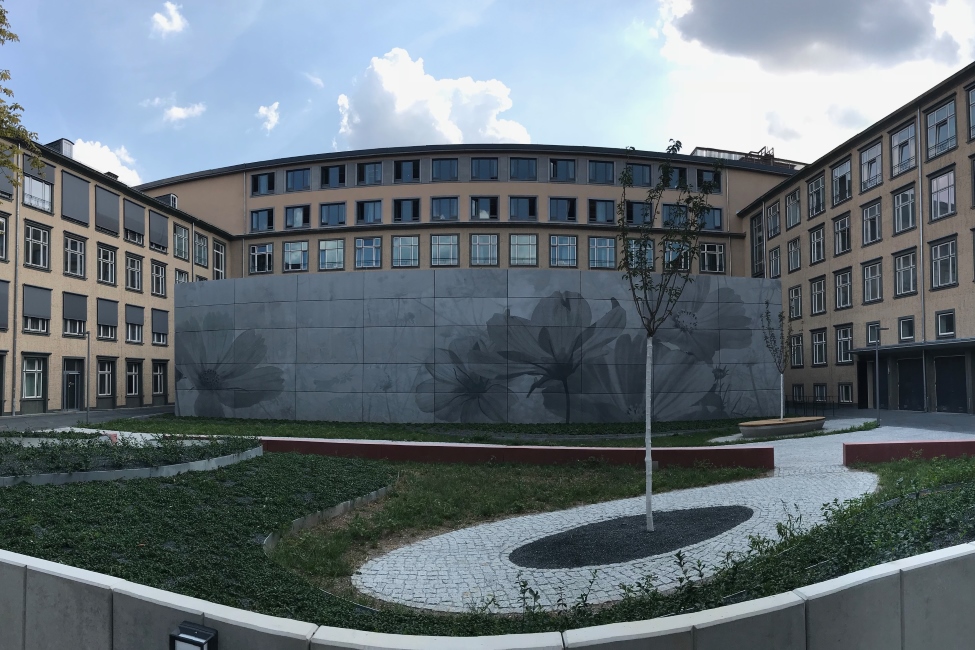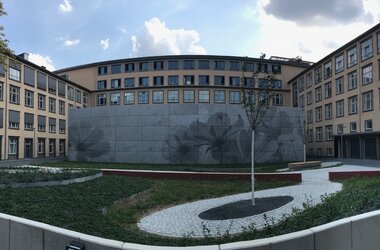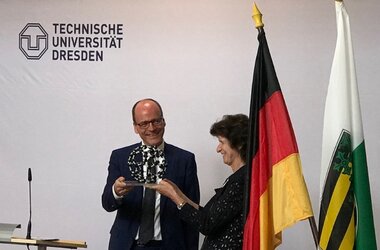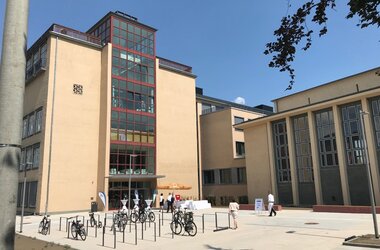GRAND OPENING OF THE NEW BUILDING AT THE CENTER FOR ADVANCING ELECTRONICS, DRESDEN (CFAED)
A model made of carbon atoms, which contains the digital key to cfaed for the building project of the Cluster of Excellence, was handed over to Prof. Dr. Hans Müller-Steinhagen, president of the TU Dresden, on 17 August by the Minister of Finance Dr. Matthias Haß and Minister of Science Dr. Eva-Maria Stange.
A model made of carbon atoms, which contains the digital key to cfaed for the building project of the Cluster of Excellence, was handed over to Prof. Dr. Hans Müller-Steinhagen, president of the TU Dresden, on 17 August by the Minister of Finance Dr. Matthias Haß and Minister of Science Dr. Eva-Maria Stange.
The new building in the Barkhausenbau complex and the upgrading of existing areas reestablishes the center for nano-analysis as an internationally recognized user center for nano-analysis in Dresden.
Under the direction of the Sächsisches Immobilien- und Baumanagement [Saxonian Real Estate and Construction Management, Public Company], Branch II and with investments amounting to 36.5 million euros about 5000 m² of floor space was created in total compliance with the man-dates for monument preservation. A total of 324 work stations are spread over office spaces, conference rooms and laboratories for highly sensitive electron microscopes and other specialized analysis equipment.
KREBS+KIEFER, from its Dresden location, provided the structural engineering services, the thermal building physics, as well as the building and room acoustics.
The intention of operating high-precision microscopes requires extremely low-vibration rooms. This proved to be extremely challenging because of the unsuitable building ground conditions at the site. Therefore, the laboratory tract had to be secured into granite bedrock with closely rastered bored piles at a depth of 18m. As far as the building physics, there were structural challenges in the laboratory tract, such as the temperature control requirement with nearly any air low, steady, almost unchanging, room temperatures, high soundproofing requirements plus time-consuming Mu-metal magnetic field shielding.



